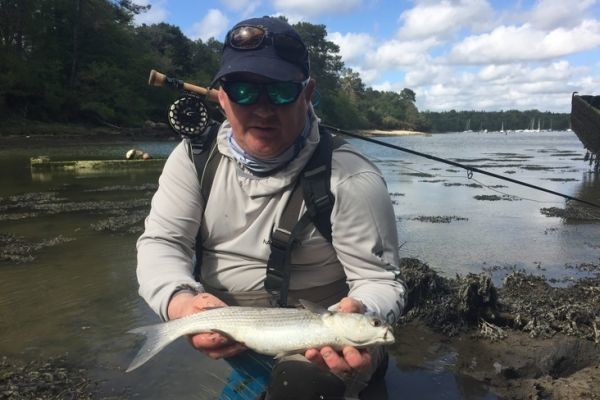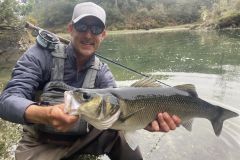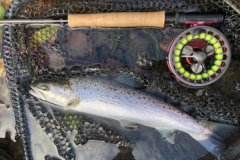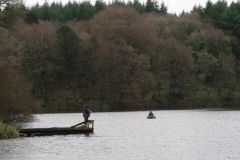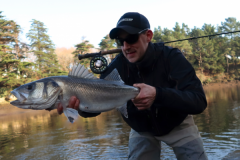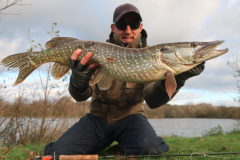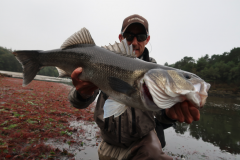Knowledge of fish and fish behaviour
In France, we have different types of mullet that live at sea, in estuaries and even in freshwater. The lippled mullet, the golden mullet and the hog mullet all colonize our French waters.
They feed on algae, micro-algae, plankton, organic debris and small invertebrates, depending on the species. This makes them difficult to catch with either lures or flies.

The two species most often caught on the fly are lippu and walleye, which live in small groups and feed in shallow water on mud flats and around seaweed.
At high tide, they are often very active in very little water, and competition for food is fierce. This is often when they can be bitten.
What equipment should you use for mullet fishing?
Mulets are generally between 40 and 50 cm long, although larger specimens do exist (up to 75 cm).
To be discreet, we recommend using a 9-foot, 6-bristle rod, which can be a reservoir or migratory rod, fitted with a reel with a watertight drag (salt and mud) containing a floating line.
A tapering leader one-and-a-half rod lengths long, finished with an 18° to 22° tip is appropriate.
Very often, a train of two flies will improve your chances of catching and offer two fly patterns.
I personally use four models of flies recommended to me by one of the moderators of the "Mullet on the Fly" Facebook page. The mullet bach, the sand shrimp, the mud shrimp and the spectra shrimp mounted on Kamasan B170 hooks in sizes 10 and 12, which were invented by Anglo-Saxon anglers.
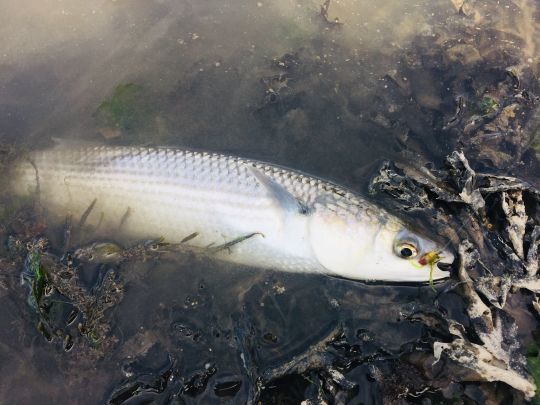
How to catch your first mullets on the fly?
It's certainly possible to catch mullet on the fly in many ways, but personally, I prefer the rising tide phase. I prefer coefficients between 45 and 70 so that the tide rises slowly. I go to mudflats where I see good groups of mullet busy on the bottom in very little water.
When the depth is shallow, i.e. less than 30 cm, the results are quite good, but as soon as the water rises too quickly, it's rare to catch any. I think the competition for food is much greater in shallow water, and the fish see our flies better as they move along the bottom.
I tie a shrimp on a tippet and a mullet bach on a gallows spaced 1 meter apart. Often, these flies have a red tag on the tail which seems to be the triggering factor. If the current is sufficient, there's no need to animate these flies. However, sometimes short, quick strips can trigger the touch.
We realize that we don't have an imitation of their favorite prey because we often have to multiply the casts and our flies pass close to many fish without attracting their attention. Then, without really understanding why! It's rare to see them caught, which is a pity because this type of fishing would be very similar to bonefish fishing.
Fights are fun on small rods, and rushes can be fast. Nevertheless, they are far less powerful than exotic marine species.
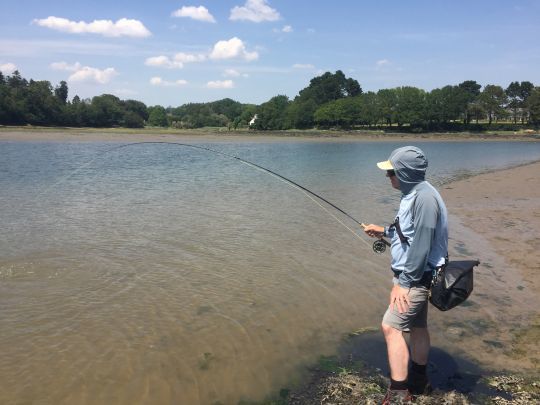
Remarks :
A Breton friend and bass and mullet fishing enthusiast, Franck R., known for his avant-garde fly patterns, also takes mullet with imitations of nereids, small worms and seaweed.
In towns like Quimper, where an estuary runs through, it's possible to catch lippu mullet with trout nymphs, notably orange-capped pheasant tail and gammares. Bread imitations are often used and sometimes work, but that's a different kind of fishing.

 /
/ 